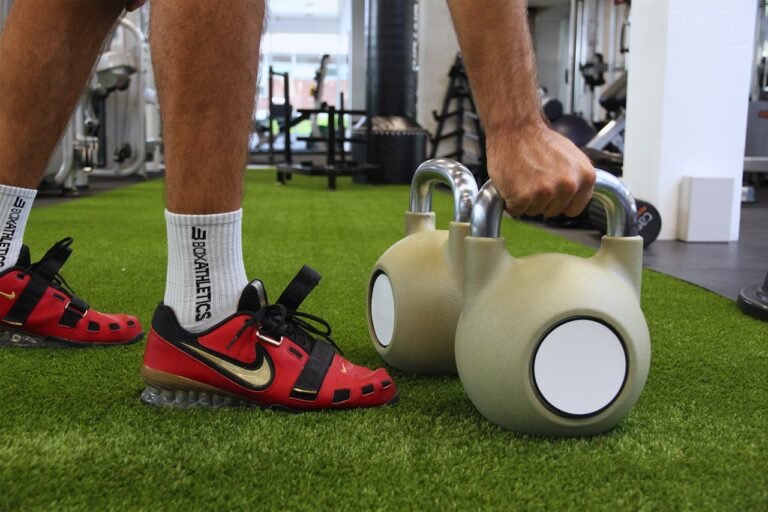Starting a workout plan is a great way to reach your weight loss goals, build strength, and improve your overall health. However, with so many options and conflicting advice, figuring out the right plan can be overwhelming, especially if you’re new to fitness. In this comprehensive guide, we’ll break down a 12-week workout plan tailored for weight loss, covering everything from strength training and cardio to flexibility work. By the end of this guide, you’ll have all the tools to kickstart a routine that fits your lifestyle and helps you shed pounds in a sustainable, healthy way.
Table of Contents
- Why Exercise is Essential for Weight Loss
- Benefits of Regular Exercise
- How Exercise Supports a Caloric Deficit
- Designing an Effective Workout Plan for Weight Loss
- The Balance Between Cardio and Strength Training
- Why Variety Matters
- Setting Realistic Goals and Tracking Progress
- Weekly Workout Plan Overview
- Phase 1: Building the Foundation (Weeks 1-4)
- Phase 2: Increasing Intensity (Weeks 5-8)
- Phase 3: Pushing Limits (Weeks 9-12)
- Phase 1: Building the Foundation (Weeks 1-4)
- Cardio Workouts: Building Endurance
- Strength Workouts: Full-Body Focus
- Flexibility and Mobility Training
- Phase 2: Increasing Intensity (Weeks 5-8)
- HIIT Cardio for Fat Burn
- Split Strength Training Routine
- Stretching and Recovery
- Phase 3: Pushing Limits (Weeks 9-12)
- Advanced HIIT and Cardio Circuits
- Targeted Strength and Endurance
- Recovery and Injury Prevention
- Tips for Success and Staying Consistent
- Tracking Your Progress
- Dealing with Plateaus
- Motivation and Consistency
- Common Mistakes to Avoid
- Overtraining
- Ignoring Form and Technique
- Skipping Warm-Ups and Cool-Downs
- Creating a Sustainable Routine Beyond the 12 Weeks
1. Why Exercise is Essential for Weight Loss

Benefits of Regular Exercise
Exercise is a cornerstone of a healthy lifestyle and an effective weight loss plan. Physical activity:
- Burns Calories: Helps create a caloric deficit, the key to weight loss.
- Builds Muscle Mass: Strength training builds muscle, which burns more calories at rest than fat.
- Improves Cardiovascular Health: Reduces risks of heart disease, high blood pressure, and diabetes.
- Enhances Mental Health: Reduces stress, anxiety, and boosts mood.
How Exercise Supports a Caloric Deficit
A caloric deficit—burning more calories than you consume—is necessary for weight loss. While diet contributes most to a caloric deficit, exercise plays a crucial role in accelerating calorie burn and helping preserve muscle mass as you lose weight.
2. Designing an Effective Workout Plan for Weight Loss
The Balance Between Cardio and Strength Training
Combining cardio with strength training is ideal for weight loss. Cardio burns calories quickly, while strength training builds lean muscle, which increases your metabolic rate.
Why Variety Matters
A varied workout plan prevents boredom and reduces the risk of injury. Changing up your exercises, sets, and intensity levels also keeps your body from adapting, helping you avoid plateaus and see continuous progress.
Setting Realistic Goals and Tracking Progress
Setting SMART goals (Specific, Measurable, Achievable, Relevant, Time-bound) allows you to stay focused and motivated. Tracking your workouts, weight, measurements, and non-scale victories (like increased energy or strength) helps keep you engaged.
3. Weekly Workout Plan Overview
This 12-week plan is divided into three phases:
- Phase 1 (Weeks 1-4): Establishes a foundation with moderate cardio and full-body strength workouts.
- Phase 2 (Weeks 5-8): Introduces HIIT for fat burn and a split strength routine to increase intensity.
- Phase 3 (Weeks 9-12): Pushes your limits with advanced workouts to maximize calorie burn and muscle building.
4. Phase 1: Building the Foundation (Weeks 1-4)

Cardio Workouts: Building Endurance
In the first four weeks, focus on moderate-intensity cardio to build cardiovascular endurance. Aim for 30-45 minutes of brisk walking, cycling, or light jogging 3-4 days a week.
Sample Cardio Schedule:
- Day 1: 30 minutes brisk walking
- Day 3: 45 minutes cycling
- Day 5: 30 minutes light jogging
Strength Workouts: Full-Body Focus
Begin with full-body workouts twice a week to strengthen all major muscle groups.
Sample Full-Body Routine:
- Squats: 3 sets of 12 reps
- Push-Ups: 3 sets of 10 reps
- Lunges: 3 sets of 12 reps per leg
- Dumbbell Rows: 3 sets of 12 reps
- Plank: Hold for 30 seconds, 3 times
Flexibility and Mobility Training
Dedicate one day per week to stretching or a yoga session to improve flexibility and prevent injury.
5. Phase 2: Increasing Intensity (Weeks 5-8)
HIIT Cardio for Fat Burn
During weeks 5-8, add two sessions of High-Intensity Interval Training (HIIT) per week. HIIT alternates between short bursts of high-intensity exercise and low-intensity recovery.
Sample HIIT Routine:
- Warm-up: 5 minutes jogging
- Intervals: 30 seconds sprint, 1-minute walk; repeat 10 times
- Cool-down: 5 minutes of light jogging or walking
Split Strength Training Routine
Introduce a split routine to target specific muscle groups on different days.
Sample Split Routine:
- Day 1: Upper Body (e.g., chest, shoulders, triceps)
- Day 3: Lower Body (e.g., squats, lunges, deadlifts)
- Day 5: Core and Back (e.g., planks, rows, back extensions)
Stretching and Recovery
Continue flexibility training 1-2 times a week, focusing on deep stretches for muscle recovery.
6. Phase 3: Pushing Limits (Weeks 9-12)

Advanced HIIT and Cardio Circuits
Add complexity to your HIIT sessions with more challenging exercises, like jump squats or kettlebell swings, to maximize calorie burn.
Sample Advanced HIIT Routine:
- Warm-up: 5 minutes jogging
- Intervals: 40 seconds high-intensity (e.g., jump squats), 20 seconds rest; repeat 12 times
- Cool-down: 5-10 minutes walking or light jogging
Targeted Strength and Endurance
Focus on lifting heavier weights to build strength. Split your strength training routine into four days, allowing for rest between muscle groups.
Sample Advanced Split Routine:
- Day 1: Chest and Triceps
- Day 2: Legs
- Day 4: Back and Biceps
- Day 5: Core and Shoulders
Recovery and Injury Prevention
Continue stretching regularly, incorporating foam rolling to release muscle tension and prevent injuries.
7. Tips for Success and Staying Consistent
Tracking Your Progress
Keep a workout journal or use a fitness app to record each workout, tracking weights lifted, reps, and how you felt. Watching your progress over time can be highly motivating.
Dealing with Plateaus
If you hit a plateau, change your routine by increasing weights, adjusting the number of reps, or trying new exercises to keep your body challenged.
Motivation and Consistency
Find a workout buddy, join a class, or set rewards for milestones to keep your motivation high. Consistency is key to seeing results.
8. Common Mistakes to Avoid

Overtraining
Overdoing it can lead to burnout and injury. Follow the plan as outlined and prioritize recovery to avoid overtraining.
Ignoring Form and Technique
Always prioritize proper form, especially as you lift heavier weights. Poor technique can lead to injury and hinder your progress.
Skipping Warm-Ups and Cool-Downs
Warm-ups prepare your body for exercise, and cool-downs aid recovery. Skipping them can increase injury risk and make workouts feel harder.
9. Creating a Sustainable Routine Beyond the 12 Weeks
At the end of this 12-week program, you’ll have built a solid foundation in both cardio and strength training. To continue your progress, consider the following:
- Mix Up Your Routine: Regularly switch exercises to keep your workouts fresh and challenging.
- Adjust Goals: Set new goals based on your progress, whether they involve weight loss, strength, or endurance.
- Prioritize Recovery: Make rest days and stretching a permanent part of your routine to stay injury-free.
Conclusion: Embrace the Journey to a Healthier You
This 12-week workout plan for weight loss is designed to set you up for success by building strength, burning fat, and establishing healthy habits. Remember, weight loss and fitness are journeys, not destinations. Focus on enjoying the process, listening to your body, and celebrating small victories along the way. With commitment, patience, and consistency, you’ll not only reach your weight loss goals but also develop a sustainable, balanced approach to health and wellness.


